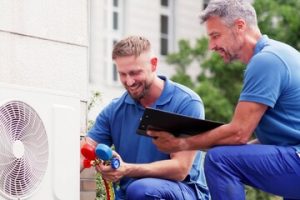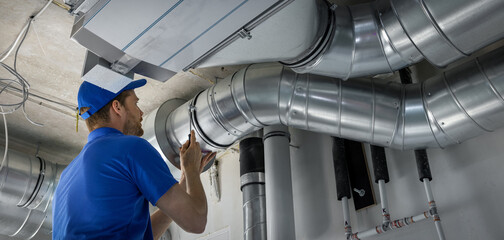In today’s world, maintaining a comfortable indoor environment is no longer a luxury—it’s a necessity. Whether it’s the height of summer or a season of fluctuating temperatures, having a reliable and efficient air conditioning system ensures a consistent level of comfort throughout the home or workplace. Proper AIR CONDITIONING INSTALLATION MILFORD OH plays a crucial role in ensuring that your system operates at peak performance, delivering both comfort and energy efficiency. From selecting the right unit to professional installation and long-term maintenance, each step influences how effectively your cooling system performs over time.

A professional approach to AC installation does more than just provide cooling—it helps optimize indoor air quality, maintain consistent temperatures, and reduce energy consumption. Many homeowners and businesses are realizing that the difference between an average installation and a professional one often lies in long-term performance and operating costs. Investing in the right installation service not only enhances comfort but also extends the lifespan of the system, making it a smart long-term investment.
Understanding the Importance of Proper Air Conditioning Installation
Installing an air conditioning system involves far more than setting up the unit and connecting a few wires. It’s a technical process that requires expertise in sizing, airflow design, refrigerant handling, and safety compliance. When done properly, installation ensures the system runs efficiently and delivers the desired cooling effect without unnecessary strain.
Improper installation can lead to multiple issues, such as uneven cooling, higher energy bills, frequent breakdowns, and reduced system lifespan. For instance, if the unit is not properly sized for the space, it may either short-cycle (turn on and off frequently) or run continuously without effectively reaching the desired temperature. Both scenarios cause unnecessary wear and tear, leading to increased maintenance costs and energy waste.
Professional air conditioning installation services focus on getting these crucial details right from the start. Certified technicians evaluate room sizes, insulation quality, and ductwork layout before recommending the best type of system for the property. This attention to detail ensures maximum efficiency, comfort, and durability.
Choosing the Right Type of Air Conditioning System
Selecting the right air conditioning system is one of the most important steps in the installation process. The ideal system should match the property’s size, layout, and cooling needs. There are several types of systems available, each offering unique advantages:
- Central Air Conditioning Systems: These are popular for larger homes and commercial spaces. They use a network of ducts to distribute cool air evenly throughout the building.
- Ductless Mini-Split Systems: Perfect for smaller spaces or properties without existing ductwork, these systems offer zone-based cooling and energy efficiency.
- Window and Portable Units: Suitable for single rooms or temporary setups, these are compact, easy to install, and cost-effective.
- Heat Pumps: These systems provide both heating and cooling capabilities, making them versatile year-round solutions.
Professional installers help clients determine which system best suits their needs, taking into account factors such as energy efficiency, noise levels, and long-term maintenance requirements.
Key Steps in Professional Air Conditioning Installation
A professional installation involves a step-by-step approach to ensure precision, safety, and long-term performance. The process typically includes:
- Initial Assessment: A technician evaluates the property to determine the right system size and placement for optimal airflow and efficiency.
- Design and Planning: The installer develops a plan for ductwork (if applicable), wiring, and drainage systems to ensure a seamless setup.
- Installation of Equipment: The indoor and outdoor units are positioned strategically for maximum performance and minimal noise disturbance.
- Connection and Testing: After connecting electrical components and refrigerant lines, the system is tested to confirm proper operation.
- System Calibration: The installer fine-tunes the thermostat and ensures even temperature distribution throughout the property.
By following this detailed process, professional installers help clients avoid future complications and maximize the return on their investment.
Benefits of Professional Air Conditioning Installation
The advantages of hiring experts for AC installation services extend far beyond immediate comfort. A well-installed system operates smoothly, consumes less energy, and lasts longer. Here are some of the most significant benefits:
- Improved Efficiency: A professional installation ensures that the air conditioner runs at peak performance, reducing energy waste and lowering monthly utility bills.
- Enhanced Comfort: Properly installed systems maintain consistent indoor temperatures, eliminating hot and cold spots.
- Longer Equipment Lifespan: When installed correctly, the system experiences less wear and tear, which reduces the frequency of repairs and extends its operational life.
- Better Air Quality: Correct duct and filter setup promotes cleaner, healthier indoor air by reducing dust and allergens.
- Warranty Protection: Many manufacturers require professional installation for warranty validity, ensuring coverage in case of future issues.
These benefits underscore why professional installation should never be viewed as an unnecessary expense but rather as a strategic investment in comfort and efficiency.
Common Mistakes to Avoid During Installation
Even small errors in installation can lead to long-term problems and unnecessary expenses. Some common mistakes include:
- Incorrect Sizing: Installing a system that’s too large or too small for the property leads to inefficiency and increased energy consumption.
- Poor Ductwork Design: Leaky or poorly designed duct systems result in energy loss and uneven cooling.
- Improper Refrigerant Levels: Incorrect refrigerant charge affects cooling performance and can damage the compressor.
- Ignoring Ventilation: Inadequate ventilation leads to moisture buildup, mold growth, and poor indoor air quality.
- Incorrect Thermostat Placement: Placing the thermostat in a hot or cold zone affects temperature readings and system operation.
Professional technicians prevent these issues through proper planning, calculations, and testing, ensuring the system performs optimally from day one.
The Role of Energy Efficiency in Modern AC Systems
With energy costs continuing to rise, efficiency has become a top priority in air conditioning installation. Modern HVAC systems are designed to deliver superior cooling while using less energy. Many units feature variable-speed motors, advanced compressors, and smart thermostats that adjust performance based on usage patterns.
Professional installers play a vital role in optimizing these energy-saving technologies. They ensure that systems are correctly matched with the building’s needs and that all components—ductwork, insulation, and controls—work together harmoniously. Choosing a high-efficiency system and pairing it with professional installation can significantly reduce utility bills and environmental impact.
Post-Installation Maintenance and Care
Even the best air conditioning system requires regular maintenance to sustain its performance. After installation, professional services often include scheduled inspections and tune-ups to ensure the unit continues to operate efficiently. Routine maintenance tasks include:
- Cleaning or Replacing Filters: Dirty filters restrict airflow and reduce cooling efficiency.
- Checking Refrigerant Levels: Maintaining proper refrigerant levels ensures optimal cooling and prevents compressor damage.
- Inspecting Coils and Fins: Regular cleaning prevents dust buildup that can impair heat transfer.
- Testing Electrical Components: Ensuring a safe and consistent power supply helps avoid malfunctions.
- Calibrating the Thermostat: Accurate readings help maintain consistent indoor temperatures.
Ongoing care not only preserves efficiency but also minimizes unexpected breakdowns and costly repairs.
Signs You Need a New Air Conditioning Installation
While maintenance can prolong a system’s life, there comes a time when replacement becomes more practical than repair. Some signs that indicate it might be time for a new air conditioning installation include:
- Frequent Repairs: If the unit requires constant servicing, investing in a new system may be more cost-effective.
- Rising Energy Bills: Increased energy consumption can indicate declining efficiency.
- Uneven Cooling: Hot and cold spots often result from failing components or improper sizing.
- Age of the System: Most air conditioners have a lifespan of 10–15 years; beyond this, efficiency drops significantly.
- Noise and Odor: Persistent, unusual sounds or odors suggest internal damage or buildup requiring replacement.
When these signs appear, consulting a professional installer ensures the right system is chosen and set up for optimal performance.
The Long-Term Value of Professional Installation
Proper air conditioning installation offers more than immediate comfort—it’s a long-term investment in your property’s value and livability. Efficient cooling systems enhance indoor comfort, reduce energy consumption, and contribute to a healthier environment. Additionally, professional installation ensures compliance with safety codes and environmental regulations, providing peace of mind for homeowners and business owners alike.
A well-installed system also increases property appeal, especially in regions with warm climates where air conditioning is a key feature. Whether for residential or commercial spaces, the combination of comfort, efficiency, and durability makes professional installation a decision that pays dividends for years to come.
Investing in professional air conditioning installation services is one of the most effective ways to ensure reliable comfort, optimal efficiency, and long-term performance. With proper system selection, expert setup, and regular maintenance, property owners can enjoy consistent cooling and lower energy costs throughout the year.
From understanding the technical aspects of installation to avoiding common mistakes and ensuring post-installation care, the benefits of professional expertise are undeniable. An experienced installer not only helps select the right system but also guarantees that it operates at peak performance from day one.
In a world where comfort, efficiency, and sustainability are increasingly interconnected, professional air conditioning installation stands out as a smart investment for both homes and businesses. When done right, it ensures a cooler, cleaner, and more comfortable indoor environment for years to come.

